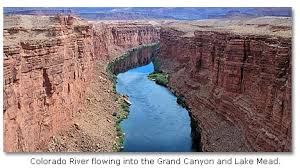 By Adam Nagourney | The New York Times
By Adam Nagourney | The New York Times
Renae Yellowhorse stood at the edge of the Grand Canyon, 26 bumpy miles across the Painted Desert from the nearest paved road, not a glint of civilization in sight. Ms. Yellowhorse, 52, who has lived her whole life on this Navajo land, cast an arm over the gulf sweeping out to the horizon, pointing to where the Colorado River and the Little Colorado meet in a dazzling burst of deep blue 3,000 feet below.
“This is where the tram would go,” she said. “This is the heart of our Mother Earth. This is a sacred area. It is going to be true destruction.”
Ms. Yellowhorse was referring to the proposed $1 billion Grand Canyon Escalade development, a complex of restaurants, boutique hotels, stores and a trailer park clustered around a gondola that would whisk visitors down to a restaurant, an Indian cultural center and an elevated river walk on a part of the canyon floor that is Navajo land, just outside the park boundary. The proposed development, on 420 acres of rabbitbrush and grass with stunning views of the canyon, is the latest — and perhaps the most ambitious — in a long and contentious history of attempts by developers to build near a national landmark that draws 4.5 million people a year.











